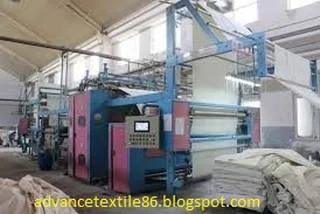Singeing
Singeing
is a process, which removes protruding fiber from the fabric surface by
lighting a gas fire, or a deliberate method of treatment.
Objectives of singeing
1.
Singeing increased wettability and better dyeing characteristics.
2.
It improved reflection and no "frosty" appearance.
3.
It gives a smoother surface and better clarity in printing.
4.
It improved visibility of the fabric structure, less pilling, and decreased
contamination through the removal of fluff and lint from cotton fabrics.
Singeing Process
A
singe is a slight scorching, burn, or treatment with flame. This may be due to
an accident, such as scorching one's hair when lighting a gas fire, or a
deliberate method of treatment or removal of hair or other fibers. In the
textile industry, loose fibers protruding on the surface of textile goods are
singed to remove them. The process is usually to pass one or both sides of
fabric over a gas flame to burn off the protruding fibers. Infrared or heat is
used for thermoplastic fibers. Singeing of yarns is called "gassing".
It is usually the first step after weaving or knitting, though the fabric may
be brushed first to raise the surface fibers. Then passes over the heated
copper plate or open gas flame. This is done very rapidly, otherwise fabric
burns.
Type of singeing
1.
Plate singeing
2.
Roller singeing
3.
Gas flame singeing
Plate singeing
The
fabric goes over and over with one or two heated curved copper panels in this
type of singeing machine. The plate thickness ranges from 1 and 2 inches.
Suitable combustion of gas mixed with air is used to heat the plates. The
plates are heated to light redness and the fabric fills the plates at a speed of from 155 to 260 meters per minute and is in contact with it.
Roller singeing
The
fabric moves through and into contact with a heated cylindrical cylinder made
of copper or cast iron with this kind of singeing machine. With internal
firing, the rotary cylinders turn slowly, and a cool surface of the roller
constantly comes into contact with the fabric. This type of machine is perfect
for velvet and other pile fabrics to be singed.
Gas flame singeing
The
singeing process where a gas burner is used for removing protruding fiber is called
gas flame singeing. A perfect mixture of gas and air under pressure is used as
the source of heat in gas singeing. This mixture is fed into a combustion slot
burner. It is possible to use coal gas, petrol gas, or butane gas as fuel. The
width of the burner can be adjusted to different widths of the fabric. The
flame height and consequent heat intensity for different fabrics can vary by
changing the pressure or mixture gas and air ratio of the mixture.
Conclusion
Cellulose
fibers such as cotton are easily singed because the protruding fibers burn to
light ash which is easily removed. Thermoplastic fibers are harder to singe
because they melt and form hard residues on the fabric surface.









0 Comments